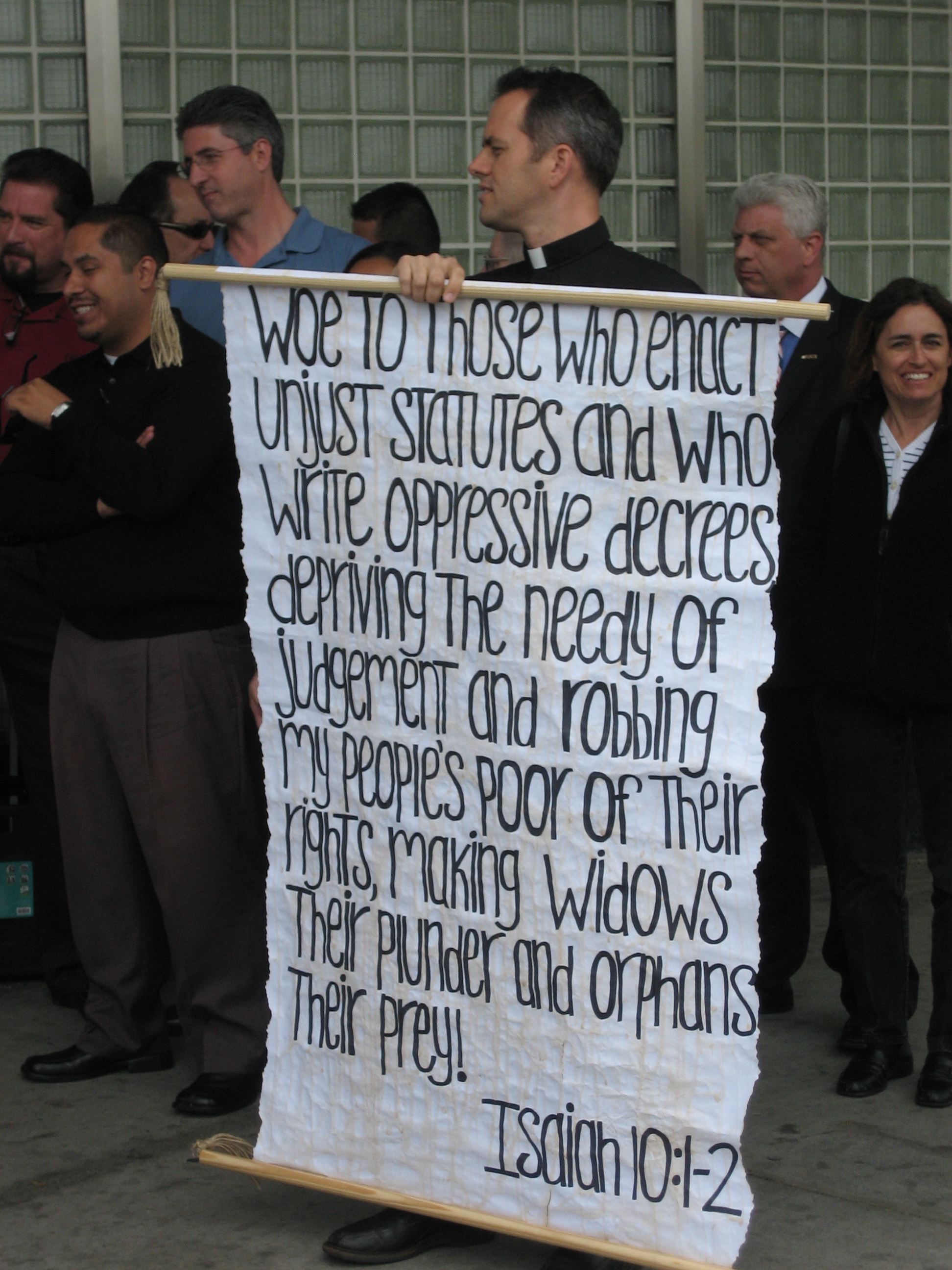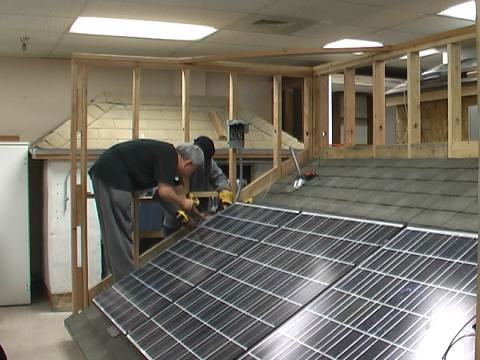Religious leaders and workers’ rights advocates gathered in front of a South Los Angeles Wal-Mart on Monday morning to voice their support for the Employee Free Choice Act.
The pending legislation, which was introduced in the U.S. Congress on March 10, would “amend the National Labor Relations Act to establish an easier system to enable employees to form, join, or assist labor organizations” and “provide for mandatory injunctions for unfair labor practices during organizing efforts.”
The protest was organized by Clergy and Laity United for Economic Justice (CLUE), an organization of more than 600 religious leaders from across Los Angeles County that advocates for the working poor..jpg)
The current law intended to protect workers’ right to unionize is the National Labor Relations Act, which President Franklin Delano Roosevelt signed into law in 1935. But workers’ rights advocacy groups like CLUE argue that the penalties are not severe enough to prevent employers from using harassment or intimidation to prevent workers from joining unions. In addition, CLUE said that even if workers are able to form a union, they are frequently unable to negotiate a contract with employers.
“We really believe that the Employee Free Choice Act is the best legislative option right now for lifting the working poor out of poverty,” said Pastor Bridie Roberts, Program Director for CLUE. “When workers’ right to organize is protected, when they can form a union, they make 20 to 30 percent more an hour almost immediately, and they almost always have access to family health insurance.”
Robert Branch, a security officer for a private security firm near LAX, spoke at the protest in support of the new legislation. Branch said that during a six-year battle between his union and his employer over a contract, three of his co-workers died because they did not have health insurance.
Under the Employee Free Choice Act, an employer would be legally required to recognize a union after a majority vote by employees, and contracts would be settled by a neutral third party if a union and an employer cannot reach an agreement within 120 days.
“The Employee Free Choice Act is so vital to working people,” Branch said. “If it passes, it’s going to be a benefit to working people, taking the stick of power out of the employer’s hand and putting it in the hand of working people, where it belongs.”
The location for the protest was chosen because “Wal-Mart is one of the most infamous and well-documented anti-union companies,” Roberts said.
Despite the location of the protest, no Wal-Mart employees appeared to be present. “I believe that they would be chastised or harassed or fired or just mistreated because of the way the company deals with its employees,” Branch said.
Professor Nelson Lichtenstein of the University of California Santa Barbara is the editor of “Wal-Mart: The Face of Twenty-First-Century Capitalism” and author of “The Retail Revolution: How Wal-Mart Created a Brave New World of Business.” He spoke about the tactics Wal-Mart uses to “deprive workers of free choice.”.jpg)
“The way that Wal-Mart is structured internally is that managers of stores, their bonus is dependent upon keeping labor costs down,” Lichtenstein said. Therefore, managers feel the need to “squeeze workers in every way they can.” According to Lichtenstein, the Wal-Mart system “can only be broken by the unionization of Wal-Mart workers.”
Lichtenstein also said that some politicians, including Dianne Feinstein, have argued that this is the wrong time for new labor laws because wages should not be raised during an economic recession. However, Lichtenstein said that the National Labor Relations Act, which was passed during the Great Depression, helped stimulate the economy by giving people greater purchasing power, and the Employee Free Choice Act would do the same.
Roberts agreed that now is the wrong time to neglect workers. “We’re in an economic crisis, and it’s really easy to forget the people at the bottom,” she said. “But unless you invest in the working people, which is the largest group of people in our country, we are going to spiral farther down this path.”
Roberts also pointed out that what she and fellow protesters are really asking for is the enforcement of rights that workers are already supposed to have. “The right to organize is granted to workers already, and there are so many things standing in the way,” she said. “It needs some correction. And it’s the people’s right to ask for a transformation of the law to make sure that it represents the people.”










.jpg)

.jpg)






